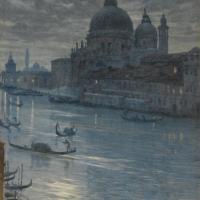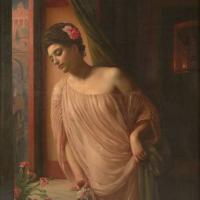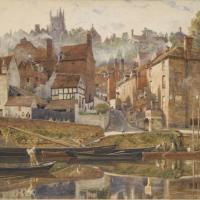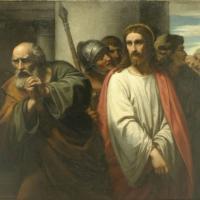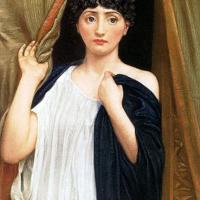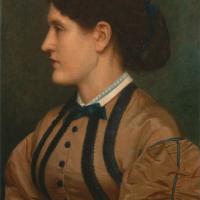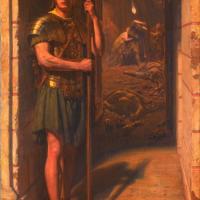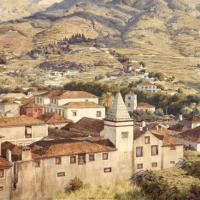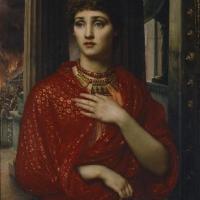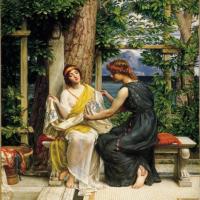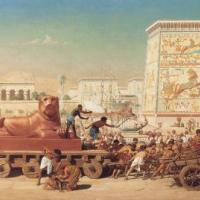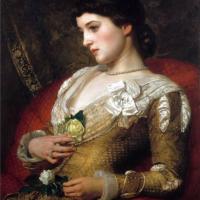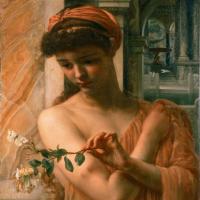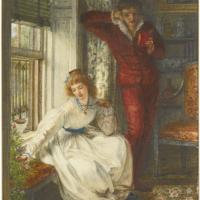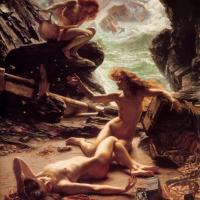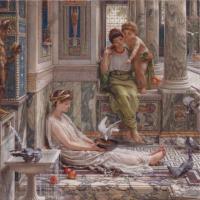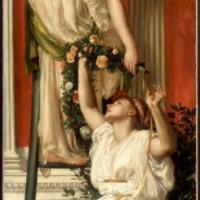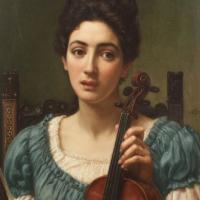Sir Edward John Poynter
Default
24
A Moonlight Scene
$480.00
Asteri
$480.00
By Severnside, Bridgnorth
$480.00
Cressida
$480.00
Eliza Eastlake
$480.00
Faithful Unto Death
$480.00
Funchal, Morning Sun
$480.00
Helen
$480.00
Helena And Hermia
$480.00
Israel In Egypt
$480.00
Mrs Langtry
$480.00
Psyche In The Temple Of Love
$480.00
The Book Of Sonnets
$480.00
The Cave Of The Storm Nymphs
$480.00
The Corner Of The Villa
$540.00
The Festival
$480.00
The Violinist
$480.00
Vision Of Endymion
$480.00
Showing 1 to 19 of 19 (1 Pages)
Sir Edward John Poynter
Sir Edward John Poynter (1836-1919)
Sir Edward John Poynter, 1st Baronet (20 March 1836 in Paris – 26 July 1919 in London) was an English painter, designer, and draughtsman who served as President of the Royal Academy.
Poynter was the son of the architect Ambrose Poynter. He was born in Paris, though his parents returned to Britain soon after. He was educated at Brighton College and Ipswich School, but left school early for reasons of ill health, spending winters in Madeira and Rome. In 1853 he met Frederick Leighton in Rome, who made a great impression on the 17-year-old Poynter. On his return to London he studied at Leigh's Academy in Newman Street and the Royal Academy Schools, before going to Paris to study in the studio of the classicist painter Charles Gleyre where James McNeill Whistler and George du Maurier were fellow-students. In 1866 Poynter married the famous beauty Agnes MacDonald, daughter of the Rev G B MacDonald of Wolverhampton, and they had three children. Her sister Georgiana married the artist Edward Burne-Jones; her sister Alice was the mother of writer Rudyard Kipling; and her sister Louisa was the mother of three-times Prime Minister of the United Kingdom Stanley Baldwin.
He became best known for his large historical paintings such as Israel in Egypt (1867; Guildhall Art Gallery, London), followed by St George for England (1869), a mosaic for the Central Lobby of the Palace of Westminster, depicting St George and the Dragon. Visit of the Queen of Sheba (1871–75) and King Solomon (1890). He was admitted as an associate of the Royal Academy in 1869.
Poynter held a number of official posts: he was the first Slade Professor at University College London from 1871 to 1875, principal of the National Art Training School from 1875 to 1881 and director of the National Gallery from 1894 to 1904 (overseeing the opening of the Tate Gallery). He became a Royal Academician in 1876. In 1896, on the death of Sir John Millais, Poynter was elected President of the Royal Academy. He received a knighthood in the same year and an honorary degree from Cambridge University in 1898. It was announced that he would receive a baronetcy in the 1902 Coronation Honours list published on 26 June 1902 for the (subsequently postponed) coronation of King Edward VII, and on 24 July 1902 he was created a Baronet, of Albert gate, in the city of Westminster, in the county of London.
It appears from the subjects of his paintings (King Solomon and King Solomon's Temple) and his association with Kipling that he was a Freemason. Prints of his painting The Visit of the Queen of Sheba to King Solomon are to be found in many Masonic Lodges around the world.
Poynter's old school, Brighton College held an exhibition of Poynter's paintings and drawings entitled 'Life at Arms Length' in its Burstow Gallery in November–December 1995.


